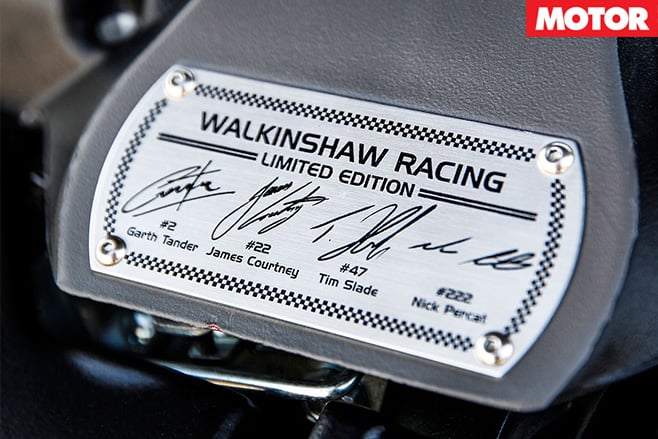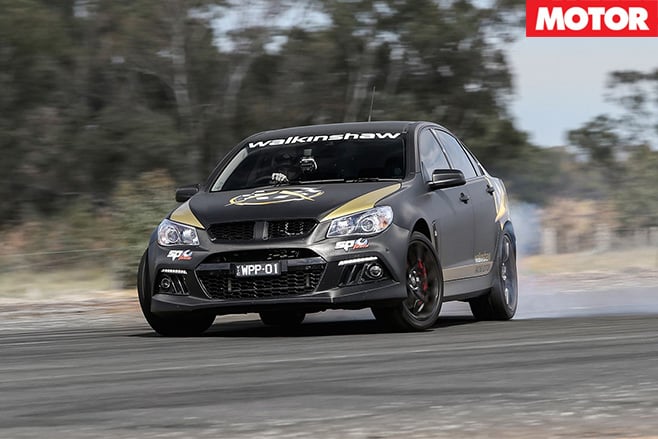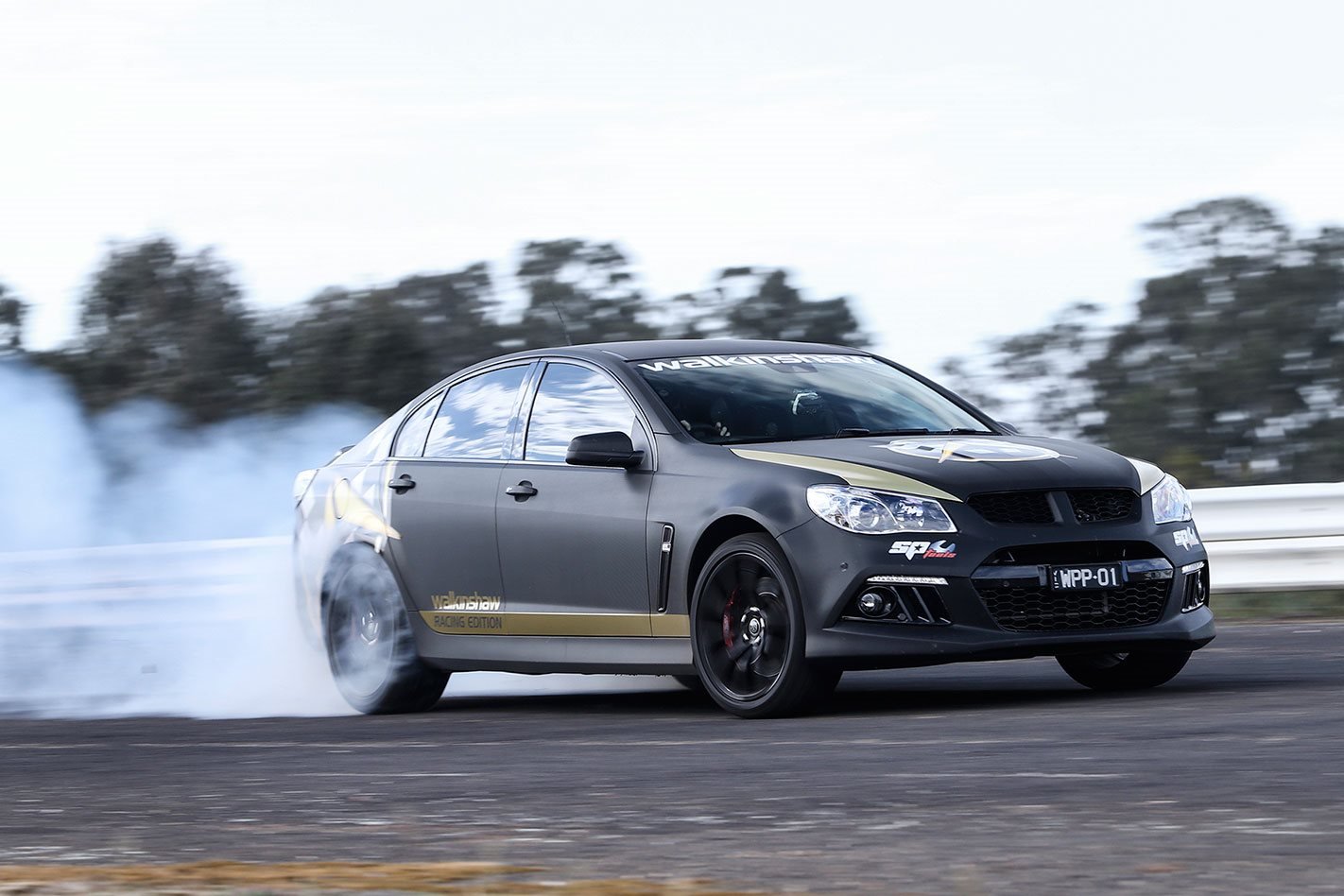A 1984 Rover Vitesse might seem an unlikely place to find inspiration, apart for perhaps a trip to the local wreckers or re-enacting an old episode of The Bill, but it’s that very vehicle that led to the creation of Walkinshaw Performance’s new 550kW/980Nm monster.
You see, the Walkinshaw Racing Edition was created to celebrate 30 years since Tom Walkinshaw Racing made its first foray into Australian motorsport, entering a Rover Vitesse in the James Hardie 1000.
While Walkinshaw himself, sharing a Jaguar XJ-S with John Goss, was taken out having stalled on the grid, Jeff Allam and Armin Hahne finished a fighting 12th outright and first in Group A, 11 laps behind the mighty Marlboro Commodore of Peter Brock and Larry Perkins.

Walkinshaw Performance general manager Tony Harris hatched the idea of a special edition about 15 months ago, but was adamant it had to be a worthy tribute. “We didn’t want it to use our existing product range, it had to be something special – we didn’t want a sticker pack.”
While the resultant Walkinshaw Racing Edition does come with a full set of decals, it’s what’s under the bonnet that’s of greater interest. When factory-fettled HSVs come packing 430kW/740Nm, it’s tough for the aftermarket to produce a set of headline numbers, but 500kW/800Nm guarantees a second take. And that’s just the baby version, based on the 6.0-litre V8 found in the VE/VF Commodore SS.

Forget V8 Supercars, those numbers make Walkinshaw’s latest hero more powerful than the most powerful production car currently on sale in Australia, outpunching the Ferrari F12’s 545kW and landing within spitting distance of the 1000Nm produced by AMG’s 6.0-litre twin-turbo V12 found in its ‘65’ models.
Unsurprisingly, extracting this level of output from a humble GM powerplant requires a bit of modification, though not as much as you might expect. Sitting atop the engine is Walkinshaw’s WPP 230 supercharger, each individually numbered and signed by Walkinshaw Racing’s four V8 Supercar drivers – Garth Tander, James Courtney, Tim Slade and Nick Percat – for that extra-special touch.

The bottom end remains standard, but Walkinshaw upgrades the valve gear and installs a different camshaft, as well as ceramic-coated headers and a cat-back exhaust. With everything supplied, fitted and tuned you’re looking at $24,490.
For such a serious outlay you’d want serious performance. We’ve tested a lot of tuner cars over the years that have claimed big numbers but haven’t been much faster than the stock examples, which illustrates two things: the law of diminishing returns (ie, you need lots more power to go a little bit faster), and that all the power in the world means nothing if you can’t translate it into forward motion.
No such problems here, WPP01 nailing 0-100km/h in 4.09sec and a 12.08sec quarter at 195.19km/h. Want to go hunting M5s or E63s? Here’s your car. And it’s dead easy: find a clean bit of tarmac, floor the throttle and it just hooks up and reels in the horizon.
A good surface and good rubber are key; as soon as traction is lost that mammoth torque just turns the 275/35 R20 rear Continentals into very expensive clouds. It’s strong from idle, but it’s the top-end ferocity that sets it apart from any of the factory efforts. It makes a wicked noise, too, like it’s ripping the air apart in anger.

“It doesn’t have to be OE (original equipment spec), but we’re not about compromising the integrity of what is already a great product,” says Harris. “There are people who want to go to the extreme with their vehicles, [but] they’re probably not … our target market.”
Remove the carbonfibre wrap and only the slightly feral exhaust note would hint that all is not stock in WPP01. The power delivery is smooth and tractable and, incredibly, on a highway cruise fuel economy is no different from the standard product. The MOTOR crew drove WPP01’s sister car, the 500kW/800Nm SS, from Melbourne to Sydney and achieved 700km from a tank with ease.

That is, of course, exactly what it is, but it’s remarkable that the base car should handle a 70 per cent increase in power so easily. “I think it’s testament to the engineering that’s gone into the base car,” Harris says. “We’ve got to give credit to the engineers who designed [the Clubsport], because it’s a fantastic vehicle that lends itself to the right sort of performance upgrades.”
All of Walkinshaw’s upgrades are backed by a warranty that begins on fitment and lasts until 36 months or 100,000km from when the vehicle was first registered. Harris dismisses the notion that adding extra power to standard componentry jeopardises long-term reliability, stating that there are now around 600 Walkinshaw-tuned vehicles around the country of varying outputs but “we’ve never had a genuine, warrantable failure.

That said, while the standard cars do handle the extra power remarkably well, some chassis upgrades wouldn’t go astray when dealing with cars this fast.

If you’re spending the best part of $25K on the engine, an extra $4990 for brakes seems like a good investment.
Suspension, too, could do with some sorting. There’s nothing wrong with the chassis in a VF Commodore or Gen-F Clubsport – the opposite, in fact – but with the extra power you’re often travelling faster and asking more of the tyres than you would in the standard car, so replacing the stock suspension with something with a little more finesse and control certainly wouldn’t hurt.

Makes sense if you think about it. Any buyer looking for a supercharged sedan has probably already bought a GTS, but those enthusiasts looking for GTS power (or more) in a less traditional package have pounced on the opportunity. A 550kW Grange, anyone?
The Walkinshaw Racing Edition might be sold out, but it’s a reminder that as our local product improves, so too do the aftermarket variants that use them as a base.
We can only hope that whatever replaces the Commodore and Falcon post-2017 allows similar freedoms for tuners to push the boundaries, but you can guarantee they’ll aim to improve it no matter what. After all, look what some managed with a 1984 Rover Vitesse.






